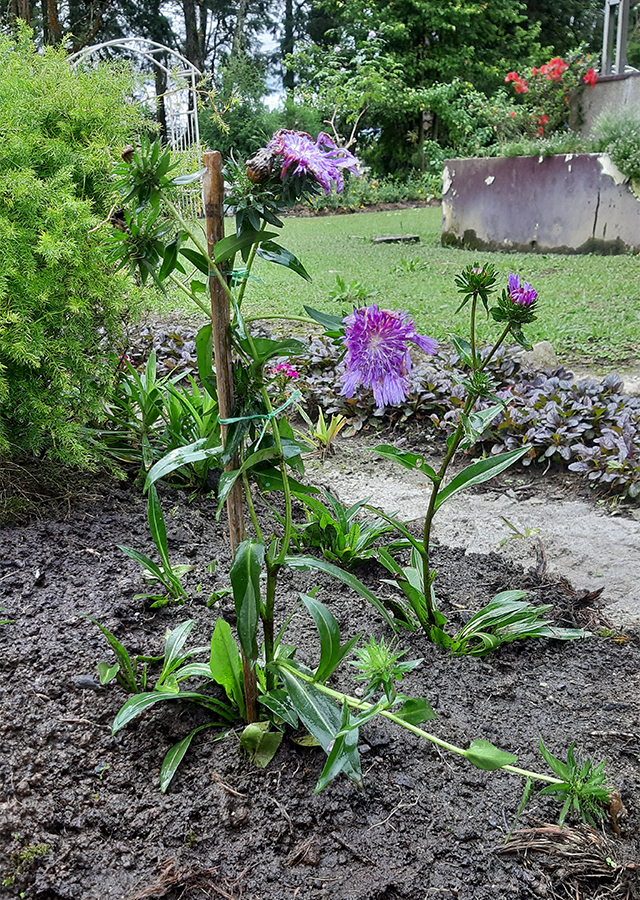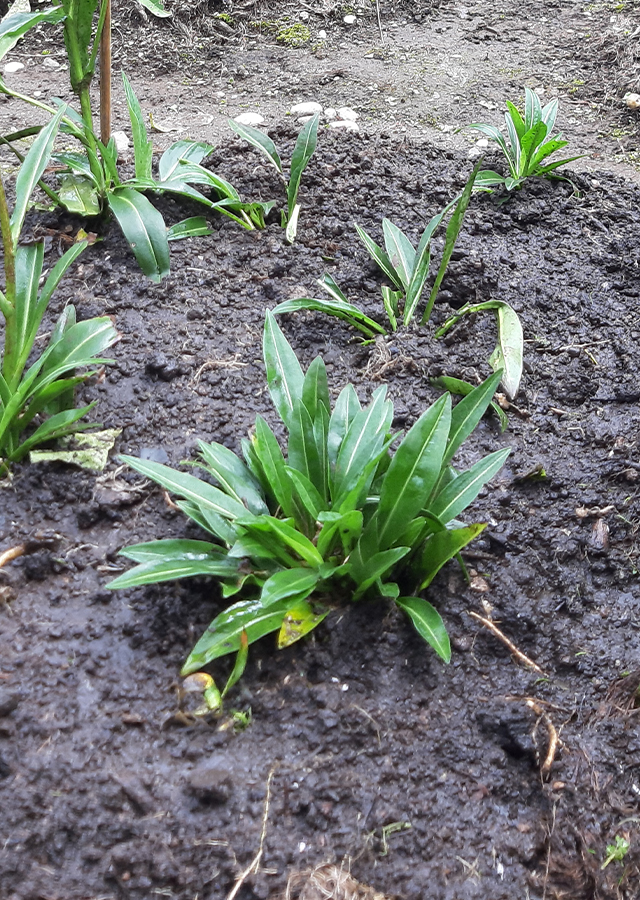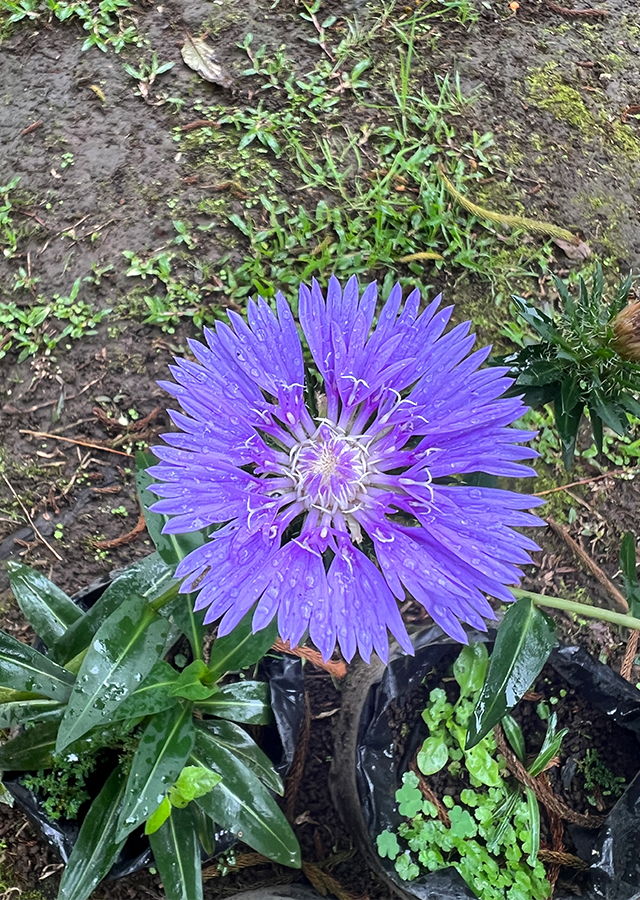Cornflower
Centaurea cyanus L.
Asteraceae
Location in our garden
Principal



Synonym
Centaurea segetalis Salisb.
Cyanus segetum Hill
Centaurea cyanocephala Velen.
Habitus
Herbaceous. An annual ground herb growing 20-90 cm tall
Part Used
Leaves
Seeds
Flowers
Growing Requirements
Full Sunshine
Habitat
Roadside
Terrestrial
Overview
Centaurea cyanus is native to Mediterranean Europe and Western Asia, then it spread to Australia and many Northern Hemisphere countries including the United States and Canada. The scientific name of the genus, Centaurea was derived from the story of the centaur Chiron, Achilles adviser. According to Greek myth, Achilles was wounded with a poisoned arrow (by Herakles), and his wound was healed by applying cornflower plants. The species name cyanus was given because of the flowers vivid blue colour. The common name 'Cornflower' comes from the fact that the plant grows wild in the grain fields of southern Europe. The dried flowers are used to make medicine. The recent studies showed that the plants are a valuable source of a wide range of secondary metabolites, which are used as pharmaceuticals, agrochemicals, flavors, fragrances, colours, pesticides and food additives.
Vernacular Names
Centauree bleue (French), Azulejo (Spanish), Fiordaliso (Italian), Kornblume (German), Vasiljok sinij (Russian), Che lun huo (Chinese).
Agroecology
Cornflower grows from the sea level up to about 2.500 m of altitude, both in fallow and in uncultivated fields, especially in the wheat fields, from which, nowadays, it has almost disappeared due to the massive utilization of herbicides. Easily grown in average, medium moisture, well-drained soils in full sun to light shade. Plant stems will droop in too much shade. Plants tolerate poor soils. Avoid wet soils. It thrives in porous, dry or moist, nutrient-rich soils.
Morphology
- Stem - hollow, angulated, erect stem, wiry, slightly tomentose.
- Leaves - greyish, branched, 2-10 cm long alternate, tomentose, the basal ones being linear, lanceolate, entire or with just delineated lobes and sharp apex, but at times, they may be pinnate-parted; those along the stem are alternate, linear, lanceolate, thin, shorter than the basal ones.
- Flowers - blue to purple, pink to red, or cream to white. The terminal inflorescence, with a diameter of 2,5-4 cm, formed by a crowd of sessile flowers (without peduncle), spirally inserted on a roundish base; the receptacle, surrounded by an involucrum, about 15 mm tall and 6-10 mm broad. The flowers of the outer ring, called ray florets, are 20-25 mm long and have the corolla, formed by five petals fused together which extend laterally in radial direction, with apex subdivided in lanceolate lobes. The ray flowers are sterile and have the function of attracting the pollinator attention, same as the petals of a single flower. The fertile flowers, are inside this ring and are 10-15 mm long, with a symmetrical tubular corolla of purple colour with five short lobes.
- Fruit - containing one seed only (an achene), about 4 mm long, with a colour going from the yellowish brown to the blackish, surmounted by the pappus, the modified calyx of the flower, formed by a crown of rigid brownish orange bristles, which has the function to aid their dispersal.
Cultivation
Generatively propagated by seed, which can be placed directly in the ground in spring; the most favourable temperature is around the +10 °C, the blooming begins after 5-6 weeks.
Chemical Constituents
Flavonoids (naringenin, kaempferol-glycosides, luteolin-glycosides, quercetin, naringin), anthocyanins, phenilpropanic compounds, tannin, aromatic acids (chlorogenic acids, p-hidroxibenzoic, p-coumaric, vanilic, syringic, ferulic, salicilic and benzoic acids), phenolcarboxylic acids, amino acids, sugars, indole alkaloids, coumarins (scopoletin, umbelliferone).
Traditional Medicinal Uses
- It has antibacterial, anti-inflammatory, antiserotonin, antioxidant, gastroprotective effect, diuretic, toxicity and adverse effect.
- Taken internally as an herbal tea, it is thought to aid in soothing stomach ulcers, while rinsing with the tea is used to speed the healing of sores or bleeding gums in the mouth. Cornflower tea to treat fever, constipation, water retention, and chest congestion. it is also used as a tonic, bitter, and liver and gallbladder stimulant. Women take it for menstrual disorders and vaginal yeast infections.
- By crushing the leaves and applying their juice directly to a wound. The plant also has a beneficial effect when the flower heads and crushed leaves are applied as a poultice to bruises, aching muscles, and inflamed joints.
- Seeds used as mid laxative for children.
- A highly concentrated infusion of the flower heads, either fresh or dried, can be used as a wash on the scalp to get rid of dandruff.
Part Used
Reference Sources
- Al-Snafi, A.E. (2015). THE PHARMACOLOGICAL IMPORTANCE OF CENTAUREA. International Journal of Pharmacy Review & Research, 5(4):379-384.
- Kew Royal Botanic Gardens. (No date). Plants of the World Online: Centaurea cyanus L. https://powo.science.kew.org/taxon/urn:lsid:ipni.org:names:190310-1. 07-01-2023.
- Missouri Botanical Garden. (No date). Centaurea cyanus. https://www.missouribotanicalgarden.org/PlantFinder/PlantFinderDetails.aspx?taxonid=277177. 07-01-2023.
- Monaco Nature Encyclopedia . (No date). Centaurea cyanus. https://www.monaconatureencyclopedia.com/centaurea-cyanus/?lang=en. 07-01-2023.
- Stuartxchange. (2014). Philippine Medicinal Plants: Coral flower. http://www.stuartxchange.org/CoralFlower.html. 07-01-2023.
- The Herbal Resource. (2018). Cornflower – Medicinal Uses and Side Effects. https://www.herbal-supplement-resource.com/cornflower-health-benefits.html. 07-01-2023.


